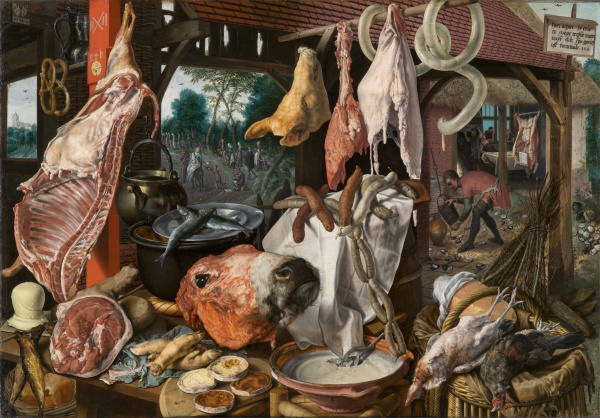Facts About A Meat Stall with the Holy Family Giving Alms
"A Meat Stall with the Holy Family Giving Alms" completed in 1551 by the notable Netherlandish artist Pieter Aertsen, is a captivating masterpiece. At first glance, the painting appears to be a straightforward market scene filled with various meats and food items. However, a closer inspection reveals a profound narrative unfolding in the background: a depiction of the biblical scene of the flight into Egypt, capturing the Virgin Mary bestowing alms to the poor.
Pieter Aertsen, a master of still-life painting from Amsterdam who also worked in Antwerp during the vibrant Northern Renaissance of the 16th century, was a pioneer in the art world. Renowned for his innovative compositions, Aertsen skillfully blended still life with genre painting. His distinctive approach often featured meticulously detailed, life-sized still-life elements in the foreground, subtly interwoven with compelling narrative scenes in the background.
In this particular painting, Aertsen meticulously arranges an assortment of foods on wooden tables, showcasing meats, fish, fowl, and pork. Through the stall’s windows, a hidden narrative emerges, illustrating the Holy Family's journey to Egypt and their act of sharing modest resources with those in need. The artwork is rich with symbolism, juxtaposing the abundance of food with the virtue of charity, thereby prompting viewers to reflect on the themes of spiritual nourishment versus worldly temptations.
Currently housed at the North Carolina Museum of Art, the painting's historical popularity is underscored by the existence of several versions, each slightly different in size and held in various institutions around the world.

 Canada
Canada